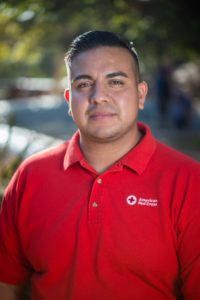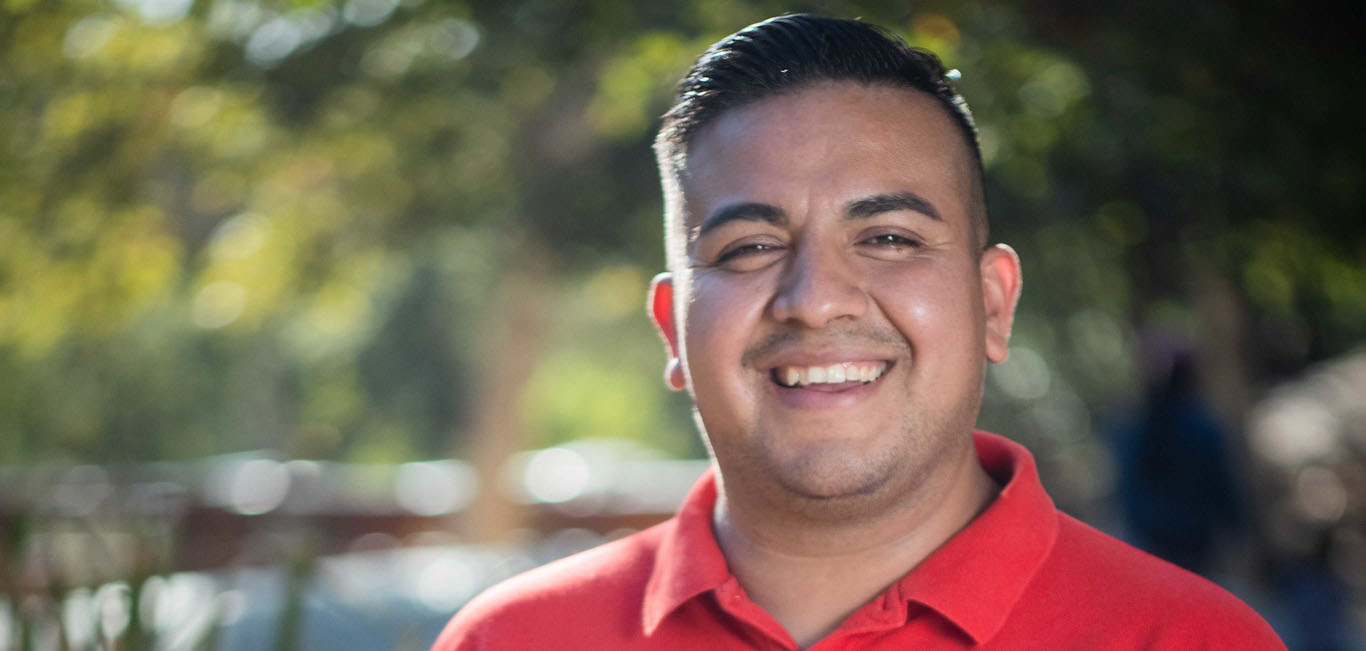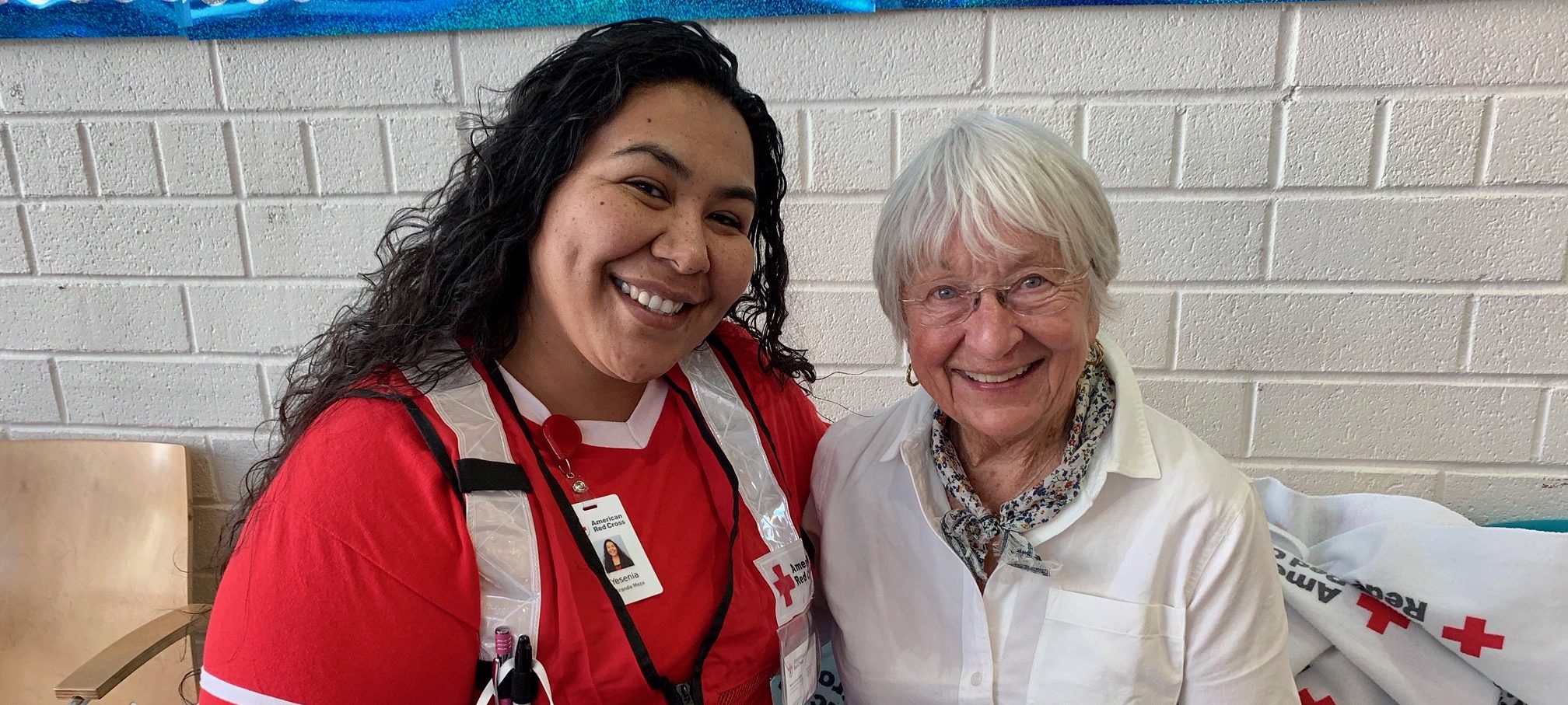Profiles for National Latino Heritage Month
 Sept. 15 to Oct. 15 is National Latino Heritage Month and the American Red Cross is celebrating by recognizing the many Latino employees, volunteers and donors who give their talent, time and treasure to the Red Cross humanitarian mission.
Sept. 15 to Oct. 15 is National Latino Heritage Month and the American Red Cross is celebrating by recognizing the many Latino employees, volunteers and donors who give their talent, time and treasure to the Red Cross humanitarian mission.
Initially observed as a week beginning in 1968 and later expanded in 1988 to a 30-day event, National Latino Heritage Month celebrates the histories, cultures and contributions of American citizens whose ancestors came from Spain, Mexico, the Caribbean and Central and South America. The Red Cross witnesses these contributions every day in communities across the country, as Latinos provide comfort to disaster victims, teach lifesaving classes, support military members and their families, and donate blood to someone in need.
The Red Cross is proud to be a part of the rich Latino heritage and tradition in the United States and even more proud of the extraordinary people who mirror the diverse community we proudly serve.

Para leer este artículo en español, desplácese hacia abajo.
Former college students are inclined to look back on their classes and identity one that has proven to be the most valuable in their lives.
So far, for Rudy Secundino, the course was time management.
He wears four Red Cross volunteer hats alone, serving as a shelter supervisor and a member of the Latino Engagement Teams (LET) among other roles.
For his non-Red Cross endeavors, Secundino, 28, could use another head to hold all the hats.
His main job is property supervisor of rental apartments. Then there is executive director of L.A. River Expeditions, which leads kayak tours and advocates for clean water; sales marketing consultant, advising stores on how to comply with federal advertising, labeling and weight requirements; Project Rudolphs, a personal philanthropist venture he started in high school that provides materials and services for deprived U.S. and Latin America communities, and the company Street Food Cinema, which sets up outdoor movie screenings.
Squeezed out of his ultra-packed calendar of activities recently was — wait for it — cabaret dancer.
Secundino uses an online schedule template to keep track of it all. Though the Red Cross gig is voluntary, it carries a high priority.
When Hurricane Maria struck Puerto Rico four years ago, Secundino was deployed on a three-week assignment. Three months later, he was still there — serving residents of hard-hit areas while remotely coordinating his other duties back home.
The motivation that drives him is assisting fellow Latinos in their time of need. The talkative Secundino struggles to explain how appreciative he is for the opportunity.
“It is something I can’t really describe,” he said. “There are no words for it.”
The roots of Secundino’s Red Cross involvement date back to his infancy. The Northridge earthquake in 1994 left his family shy of food and other items. His parents, who were undocumented at the time, and others at the apartment complex were hesitant to venture out and seek aid from government agencies.
“They didn’t want to leave our safe place,” said the first generation Mexican American.
Mom and Dad, who since gained citizenship, told Rudy that the Red Cross came to the rescue, swinging by the complex to distribute life-restoring goods.
“From that,” he said, “I always wanted to serve my community.”
His mantra: “If not us, who will do it?”
Secundino’s first experience was organizing blood drives at his high school. Eventually, he moved into the Red Cross’ disaster field.
His most rewarding work is with the LET, engaging with people “afraid to seek help,” he said, “perhaps because of their document status.”
The trip to Puerto Rico affirmed his devotion. Secundino’s stay was extended because of a dearth of Spanish-speaking volunteers. He and a partner from Hawaii ventured into rural areas plagued by a shortage of electricity and arranged a supply of generators.
“I was able to easily interact with community members and identify the needs,” he said.
Two years later, an earthquake hit closer to home, in Ridgecrest. He found pockets of undocumented Latinos who did not leave their residences, even if damaged, to bunk in shelters out of fear that their status would jeopardize their stay in the country.
“They [were] a little bit shy about giving their information,” he said.
By now, Secundino had his approach down pat. He strikes up a conversation without prying, inquires how they are faring, introduces himself and explains that the Red Cross has no official connection with U.S. Immigration and Customs Enforcement (ICE) or other government affiliations.
Secundino’s immediate goal was securing cold refreshment for people coping with the heat. A phone call to a friend who owned an ice cream shop resulted in the delivery of 400 paletas, a Mexican-style ice pop. He fondly recalls the joyous reaction of youngsters digging into the treat.
The gesture opened the door to community leaders, and the ultimate beneficiaries included folks in poor health.
Eventually, some affected by the quake did come inside, but were still unwilling to stay there. The Red Cross found cots, blankets and water for those willing to settle into a church that operated as an unofficial shelter.
One of his tasks in the wake of a disaster is reaching out to heads of communities to identity vulnerable segments of the population.
As an example, he cited Beverly Hills. The perception is that the well-heeled city would not need a hand from the Red Cross, but the gardeners and housekeepers might need assistance that the homeowners there do not.
The scope of Secundino’s contributions seems to have no limits. As part of the Red Cross’ Sound the Alarm program, he removes aging smoke alarms in homes and installs replacements designed to last for a decade. On a recent day, he set up 120 alarms in more than 30 households with a three-person team that first must educate residents on why the devices can save lives.
“It’s trying to get the trust from the community and then help them,” he said.
Something good did come from the Northridge earthquake. It set Secundino on a path of charitable work.
“Being a minority, with my parents being undocumented and never having the opportunity I have,” he said, “they always told me that if you’re given opportunities [to give back], always jump on those.
Perfiles para el Mes Nacional de la Herencia Latina
 El Mes Nacional de la Herencia Hispana se celebra del 15 de septiembre al 15 de octubre, y la Cruz Roja Americana reconocerá a los empleados, voluntarios y donantes hispanos que ofrecen su talento, tiempo y dedicación a la misión humanitaria de la Cruz Roja.
El Mes Nacional de la Herencia Hispana se celebra del 15 de septiembre al 15 de octubre, y la Cruz Roja Americana reconocerá a los empleados, voluntarios y donantes hispanos que ofrecen su talento, tiempo y dedicación a la misión humanitaria de la Cruz Roja.
A principios, se observaba como una semana que comenzaba en 1968, y en 1988, expandió a un evento de 30 días. El Mes Nacional de la Herencia Hispana celebra las historias, culturas y contribuciones de los ciudadanos estadounidenses cuyos antepasados vinieron de España, México, el Caribe, América Central y América del Sur.
Día a día, los hispanos brindan consuelo a las víctimas de desass, enseñan clases que salvan vidas, apoyan a miembros militares y sus familias, y donan sangre a comunidades de todo el país, la Cruz Roja es testigo de estas contribuciones.
Rudy usa cuatro sombreros y quiere más
 La Cruz Roja se enorgullece de ser parte de la herencia y tradición Hispana en los Estados Unidos y de las personas que reflejan la comunidad diversa a la que servimos con gran orgullo.
La Cruz Roja se enorgullece de ser parte de la herencia y tradición Hispana en los Estados Unidos y de las personas que reflejan la comunidad diversa a la que servimos con gran orgullo.
Los exestudiantes universitarios tienden a mirar hacia atrás e identificar una materia que les ha demostrado ser la más valiosa en sus vidas.
Hasta ahora, para Rudy Secundino, esto ha sido el curso de gestión del tiempo.
Él lleva cuatro gorras solo como voluntario de la Cruz Roja, sirviendo como supervisor de refugio y miembro del Equipo de Compromiso Latino (LET, por sus siglas en inglés) entre otros roles.
Para sus esfuerzos fuera de la Cruz Roja, Secundino, de 28 años, podría usar otra cabeza para sostener todas las gorras.
Su trabajo principal es supervisor de propiedad de apartamentos de alquiler. Luego está su rol como director ejecutivo de L.A. River Expeditions, que dirige recorridos en kayak y aboga por el agua limpia; consultor de marketing de ventas, asesorando a las tiendas sobre cómo cumplir con los requisitos federales de publicidad, etiquetado y peso; Project Rudolphs, una empresa filántropa personal que comenzó en la escuela secundaria que proporciona materiales y servicios para comunidades desfavorecidas de Estados Unidos y América Latina, y la empresa Street Food Cinema, que organiza proyecciones de películas al aire libre.
Exprimido recientemente de su calendario de actividades ultra-repleto fue, espere, bailarín de cabaret.
Secundino utiliza una plantilla de programación en línea para llevar un seguimiento de todo. Aunque la chamba de la Cruz Roja es voluntaria, tiene una alta prioridad para él.
Cuando el huracán María devastó a Puerto Rico hace cuatro años, Secundino fue desplegado a una asignación de tres semanas. Tres meses después, todavía estaba allí, sirviendo a los residentes de las áreas más afectadas mientras coordinaba de forma remota sus otras tareas en casa.
La motivación que lo impulsa es ayudar a sus compañeros latinos en su momento de necesidad. El hablador Secundino se esfuerza por explicar lo agradecido que está por la oportunidad.
“Es algo que realmente no puedo describir”, dijo. “No hay palabras para eso”.
Las raíces de la participación de Secundino en la Cruz Roja se remontan a su infancia. El terremoto de Northridge en 1994 dejó a su familia sin comida y otros artículos. Sus padres, que eran indocumentados en ese momento, y otros en el complejo de apartamentos dudaban en aventurarse y buscar ayuda de agencias gubernamentales.
“No querían dejar nuestro lugar seguro”, dijo le mexicano-estadounidense de primera generación.
Su mamá y papá, quienes desde entonces han obtenido la ciudadanía, le dijeron a Rudy que la Cruz Roja acudió al rescate, pasando por el complejo para distribuir bienes esenciales y proporcionará apoyo vita.
“A partir de eso”, dijo, “siempre quise servir a mi comunidad”.
Su mantra: “Si nosotros no lo hacemos, ¿quién lo hará?
La trayectoria de Secundino con la organización inicio con las campañas de donación de sangre en la escuela secundaria. Posteriormente, se cambió al área de desastres de la Cruz Roja.
El proyecto más gratificante ha sido el del LET, interactuando con personas que “tienen miedo de buscar ayuda”, dijo, “quizás debido al estado de sus documentos”.
El viaje a Puerto Rico confirmó su devoción. Su estadía se prolongó debido a la escasez de voluntarios de habla hispana. Él y un socio de Hawai se aventuraron en áreas rurales llenas de escasez de electricidad y organizaron el suministro de generadores.
“Pude interactuar fácilmente con los miembros de la comunidad e identificar las necesidades”, dijo.
Dos años después, un terremoto pegó más cerca de casa, en Ridgecrest. Encontró focos de latinos indocumentados que no salían de sus residencias, aunque sufrieran daños, para acudir a refugios por temor a que su situación pusiera en peligro su estadía en el país.
“Ellos [eran] un poco tímidos a la hora de dar su información”, dijo.
A estas alturas, Secundino tenía su técnica desarrollada. Inicia una conversación sin entrometerse, pregunta cómo les está yendo, se presenta y explica que la Cruz Roja no tiene conexión oficial con el Servicio de Inmigración y Control de Aduanas (ICE) de EE. UU. u otras afiliaciones gubernamentales.
El objetivo inmediato de Secundino era asegurar un refrigerio frío para las personas que se enfrentaban al calor. Una llamada telefónica a un amigo que era dueño de una nevería resultó en la entrega de 400 paletas. Recuerda con cariño la alegre reacción de los jóvenes que disfrutaban del pequeño detalle.
El gesto abrió la puerta a los líderes de la comunidad y los beneficiarios finales incluyeron a personas con problemas de salud.
Finalmente, algunos afectados por el terremoto entraron, pero aún no estaban dispuestos a quedarse allí. La Cruz Roja encontró catres, mantas y agua para quienes quisieran instalarse en una iglesia que funcionaba como refugio no oficial.
Una de sus tareas a raíz de un desastre es llegar a los líderes de las comunidades para identificar los segmentos vulnerables de la población.
Como ejemplo, citó a Beverly Hills. La percepción es que la ciudad adinerada no necesitaría una mano de la Cruz Roja, pero los jardineros y las amas de llaves podrían necesitar ayuda que los propietarios no necesitan.
El alcance de las contribuciones de Secundino parece no tener límites. Como parte de la Cruz Roja, la campaña Activa tú Alarma, remplaza las alarmas de humo antiguas en los hogares con alarmas diseñados para durar una década. En un día reciente, instaló 120 alarmas en más de 30 hogares con un equipo de tres personas que primero educó a los residentes sobre la importancia de los dispositivos y como pueden salvar vidas.
“Se trata de obtener la confianza de la comunidad y luego ayudarlos”, dijo.
Algo bueno vino del terremoto de Northridge. Puso a Secundino en el camino del trabajo caritativo.
“Siendo una minoría, con mis padres indocumentados y nunca teniendo la oportunidad que yo tengo”, dijo, “siempre me dijeron que si te dan oportunidades [para retribuir], siempre aprovechar de esa oportunidad.





